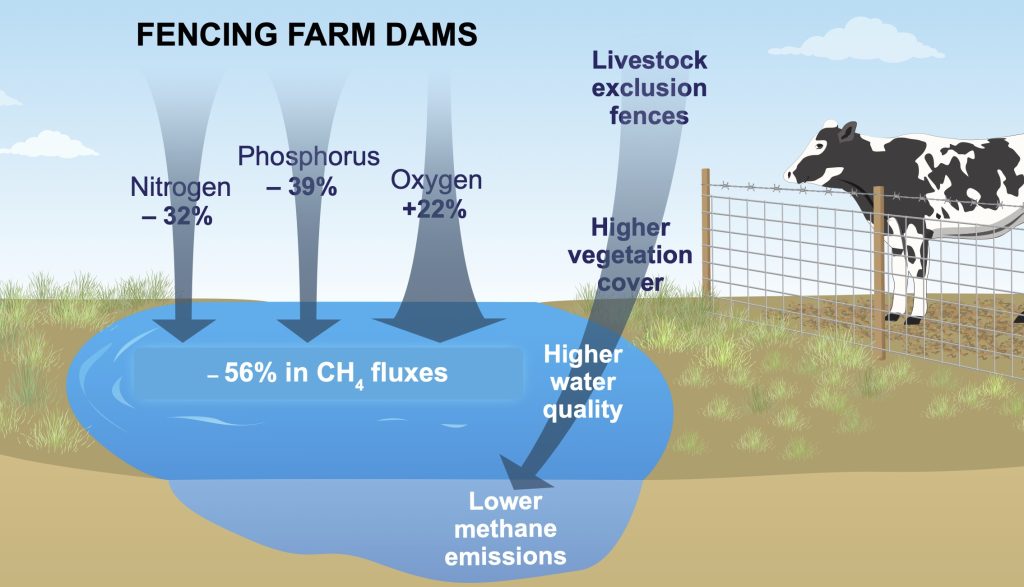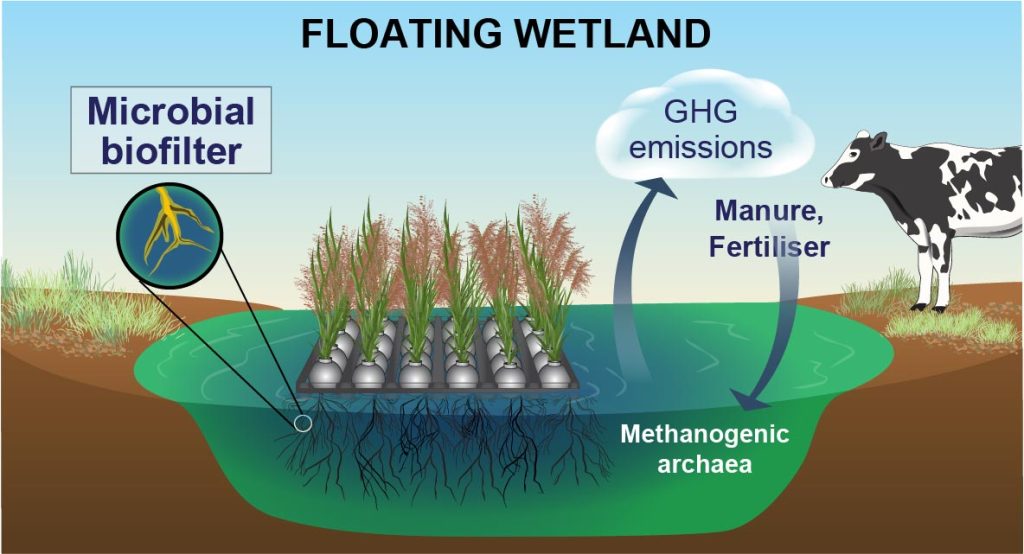REDUCING GREENHOUSE GAS EMISSIONS
Poorly managed farm dams are among the highest greenhouse gas (GHG) emitters of all freshwater ecosystems, producing the equivalent of 385,000 cars daily in Victoria alone. Understanding how to mitigate these emissions through management can help reduce agriculture’s carbon footprint in Australia and worldwide. Our team is researching active and passive management to reduce greenhouse gas emissions from farm dams while maximising farm productivity, water security, and biodiversity.
Passive Management: fencing off livestock
Excluding livestock from farm dams by installing fences can improve water quality by reducing the direct deposit of nutrient-rich manure and urine. It also prevents soil disturbance by hooved livestock and promotes vegetation growth around the dam, acting as a natural filter to reduce dissolved nutrients. Fenced farm dams have higher vegetation cover, lower levels of nutrients, turbidity, and harmful bacteria, as well as higher macroinvertebrate richness and abundance than unfenced dams. Fencing farm dams can improve water quality to benefit livestock health and weight gain.
Read more in Malerba et al. 2022, Global Change Biology

Active Interventions: floating wetlands
Floating wetlands are an innovative way to clean up polluted water. They work by growing plants on floating platforms that absorb nutrients and microbes from the water. These wetlands are natural, low-maintenance, and simple to use. Floating wetlands are better at removing nutrients than plants rooted in the soil because their roots come directly into contact with water.
Our team from Blue Carbon Lab has designed a prototype of a floating wetland that successfully reduced nitrogen and phosphorous in wastewater by about 25%. Now, we want to see if this active management can help reduce greenhouse gas emissions of farm dams.
We will test the floating wetlands in a lab to see how well they can reduce greenhouse gas emissions. Then, we’ll put them in farm dams around Victoria and monitor their effects on carbon emissions, biodiversity, water temperature, and turbidity. This exciting research offers a natural way to improve water quality while reducing greenhouse gas emissions.

